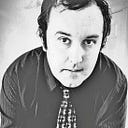Member-only story
Hitchcock’s study in voyeurism: Rear Window.
Humanity has always had a certain voyeuristic tendency about it. Even before Nicéphore Niépce took what is widely considered to be the first photographic image in 1826, prurient eyes would often wander, and the desire to look where one probably should not often wrought havoc socially and in the human heart. Certain films examine this instinct in a thoughtful way, reflexively turning the cinema lens in on itself as cinema is a intrinsically voyeuristic medium. Alfred Hitchcock’s Rear Window (1954) is one such film, which, in fact was unavailable for decades (and re-released in theaters around 1984) because its rights, along with the rights to Rope (1948), The Trouble with Harry (1955), The Man Who Knew Too Much (1956), and Vertigo (1958) were all bought back by Alfred Hitchcock and given as his legacy to his daughter. These films became known as “The Five Lost Hitchcocks.”
“Alfred Hitchcock” is a name on so many lists of “greatest filmmakers of all time” for good reason. From his early white-knuckle thrillers like Sabotage(1936) and…
